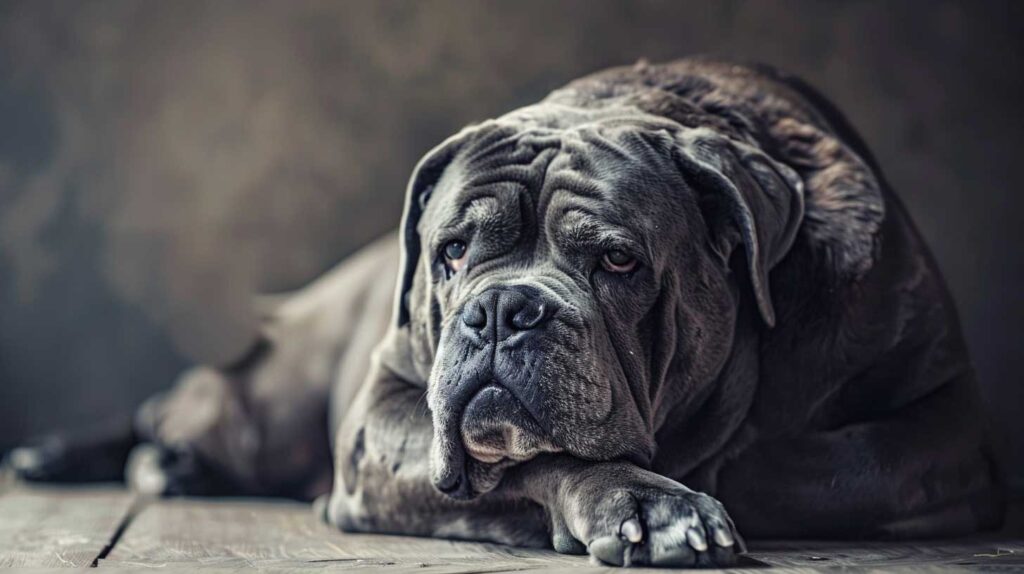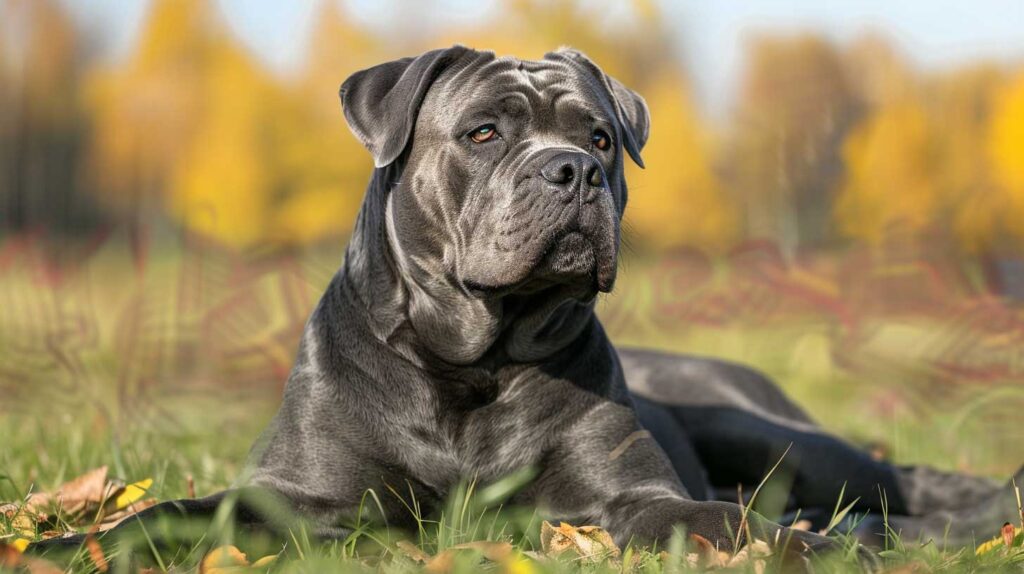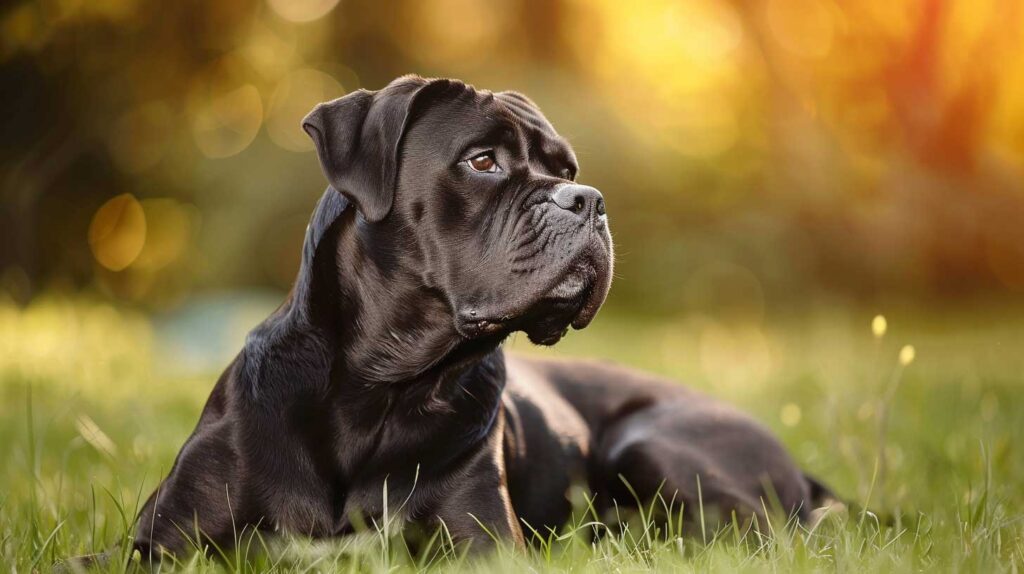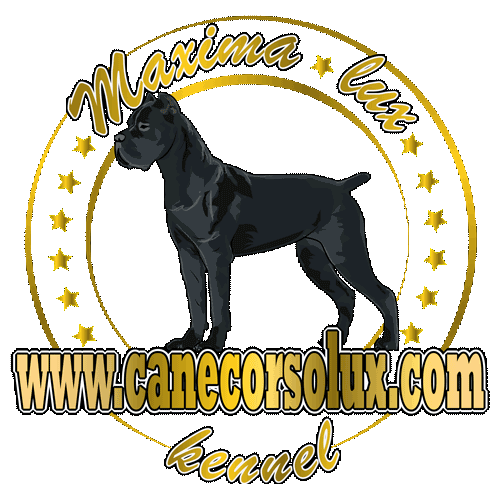Understanding your Cane Corso’s heat cycle involves grasping subtle changes in her behavior and physicality. As you observe your dog during this period, you’ll notice various signs that indicate different stages of her cycle.
However, there’s an essential aspect that many owners overlook, leading to potential complications. Stay tuned to uncover this often underestimated factor that can have a major impact on your Cane Corso’s well-being during her heat cycle.
What Is the Heat Cycle?
Understanding the heat cycle in female Cane Corsos is essential for responsible breeding practices and ensuring the well-being of your dog.
The first heat cycle in female Cane Corsos typically occurs between 10 and 12 months of age. During this time, you may notice bleeding, which lasts around 11 days. It’s important to be aware that breeding during the first heat cycle isn’t recommended due to the female’s body not being fully developed.
The entire heat cycle usually spans about 21 days, with the initial bleeding phase being a critical indicator. Monitoring your Cane Corso closely during this period and avoiding breeding until the appropriate time are key factors in maintaining your beloved canine companion’s health and reproductive success.

How Long Does a Cane Corso Stay in Heat?
The typical duration of a Cane Corso’s heat cycle spans approximately 21 days, with the bleeding phase lasting around 11 days. Female Cane Corsos usually experience their first heat cycle between 10 to 12 months of age, but sometimes it can happen in 6 months. It’s advisable not to breed a Cane Corso during their initial heat cycle as their bodies are still developing.
Understanding the length of a Cane Corso’s heat cycle is essential for proper breeding practices and care. Monitoring the female’s heat cycle duration helps in determining the fertile period and best timing for breeding. If considering breeding, it’s vital to be aware of the specifics of your Cane Corso’s heat cycle to safeguard the health and well-being of both the female and potential offspring.
Proestrus Stage Overview
During the proestrus stage of the Cane Corso heat cycle, reproductive tissues swell and bloody discharge is present. This phase typically lasts for 7 to 10 days and is characterized by symptoms such as loss of appetite and irritability.
Here are some key points to help you understand the proestrus stage better:
- Swelling: Reproductive tissues experience swelling during proestrus.
- Bloody Discharge: Bloody discharge is commonly observed during this phase.
- Loss of Appetite: Your Cane Corso might exhibit a decreased appetite during proestrus.
- Irritability: Your dog may display signs of irritability due to hormonal changes.
Understanding these aspects of proestrus can help you better care for your Cane Corso during this stage.
Signs of Proestrus
As your Cane Corso progresses through the proestrus stage, you may notice distinct signs indicating the beginning of her heat cycle.
One of the primary signs of proestrus in Cane Corsos is a swollen vulva. This swelling is often accompanied by a bloody discharge, which is a clear indication that your dog is entering this phase of her heat cycle.
During proestrus, you may observe your Cane Corso licking her vulva more frequently than usual. Additionally, she might display heightened aggression towards male dogs.
It’s essential to be aware that the proestrus phase typically lasts around 7 to 10 days in Cane Corsos. Remember, breeding during proestrus isn’t advisable due to the dog’s immaturity and incomplete physical development.
Estrus Stage Explained
Explaining the Estrus Stage in the Cane Corso heat cycle involves understanding the peak fertility period when your female dog is most receptive to mating. During this phase:
- Your Cane Corso is ready for mating.
- The estrus period typically lasts 4 to 14 days.
- The earlier bloody discharge changes to a pink or straw-colored discharge.
- Increased urination is common as your female spreads pheromones to attract potential mates.
Understanding these aspects of the estrus stage is essential for determining the best time for successful mating. Monitoring your Cane Corso’s behavior, discharge changes, and urination patterns can help you make informed decisions during this critical phase of her heat cycle.
Behavioral Changes of cane corso female in Estrus
Behavioral changes in estrus can greatly impact the interactions and behaviors of female Cane Corsos during this important phase of their heat cycle.
During the estrus phase, female Corsos exhibit increased urination to spread pheromones for mating purposes. This behavior aims to attract male dogs for breeding.
Additionally, territorial behavior becomes more pronounced in female Corsos during estrus, potentially leading to conflicts with other females.
Owners may need to manage mating behaviors, such as actively seeking out male dogs. It’s essential to be aware that aggression towards male dogs can intensify in female Corsos during the receptive phase of estrus.
Understanding these behavioral changes is vital for anticipating and addressing mating-related behaviors in female Cane Corsos effectively.
Peak Fertility Period
The peak fertility period for female Cane Corsos typically occurs around 11 to 13 days into their heat cycle. During this time, the female is most receptive to mating and has the highest chances of successful breeding.
- Female Cane Corsos show increased interest in mating during this phase.
- Monitoring behavioral cues and physical signs helps pinpoint the peak fertility period.
- Male dogs are more likely to attempt mating during this timeframe.
- Timing breeding attempts during the peak fertility period enhances the likelihood of a successful pregnancy.
Diestrus Phase Details
After pinpointing the peak fertility period, understanding the Diestrus phase details is essential for managing the breeding process in female Cane Corsos. During this phase, mating interest diminishes in the female, marking the end of the fertile period. While the female loses interest, males may still attempt to mate.
The diestrus phase typically lasts from the end of estrus until the birth of any potential puppies. A noticeable change during diestrus is the decrease in vaginal discharge, shifting to a more normal color and consistency. Additionally, the vulva size returns to its usual state as the female’s reproductive system prepares for the possibility of pregnancy.
It’s important to monitor these changes closely to determine the potential success of mating and the onset of pregnancy.
Female corso pregnancy Possibilities
Understanding the potential for pregnancy in female Cane Corsos hinges on successful mating during their fertile period within the heat cycle. Here are some key points to contemplate:
- Female Cane Corsos can conceive if mating happens during their fertile period.
- Pregnancy is more likely in the middle of the heat cycle when the female is most receptive.
- Delayed breeding towards the end of the heat cycle may decrease the chances of successful pregnancy.
- Knowing the timing of the fertile period is crucial for maximizing the likelihood of conception.
Monitoring your female Cane Corso’s behavior and the male’s interest can help pinpoint the prime time for breeding to increase the chances of a successful pregnancy.

False Pregnancy Symptoms
Pregnancy possibilities in female Cane Corsos hinge on successful mating during their fertile period within the heat cycle. Understanding false pregnancy symptoms becomes essential to differentiate between actual and deceptive signs of gestation. False pregnancy in Cane Corsos can mimic real pregnancy symptoms due to hormonal changes post-heat cycle. Watch for signs like weight gain, nesting behavior, and swollen mammary glands.
Your female Cane Corso may display maternal behaviors towards toys or objects, indicating a false pregnancy. Typically occurring 6-12 weeks post-heat cycle, it’s vital to recognize that despite the similarities in symptoms, it isn’t a real pregnancy. Monitoring these symptoms closely and consulting with a veterinarian can help manage false pregnancy in Cane Corsos effectively.
Anestrus Phase Importance
During the anestrus phase of the Cane Corso heat cycle, the reproductive system undergoes important preparations for the upcoming cycle, characterized by a period of reproductive dormancy lasting 100-150 days. This phase is vital in the reproductive cycle, and several key points highlight its importance:
- The pituitary gland and ovaries remain active, even though there are no visible signs of heat.
- Uterine repair commences during anestrus, laying the groundwork for the next reproductive cycle.
- It’s recommended to avoid male dogs during anestrus to prevent unwanted mating.
- This phase serves as a quiet yet essential period in the overall reproductive process, ensuring the female is ready for the next cycle.
Hormonal Changes During Anestrus
As the female Cane Corso progresses through the anestrus phase, hormonal changes play a significant role in preparing her reproductive system for the upcoming cycle. During anestrus, uterine repair commences, ensuring the reproductive system is in best condition for the next heat cycle.
Female Corsos experience hormonal shifts during anestrus, where the pituitary gland and ovaries remain active despite the absence of visible reproductive activity. These changes are important for maintaining the health and functionality of the reproductive system.
It’s essential to note that female Corsos should be kept away from male dogs during anestrus to prevent unintended matings. The duration of anestrus can vary but typically lasts between 100-150 days, influencing the timing of the next heat cycle.
Heat Cycle Frequency
Female Cane Corsos typically undergo heat cycles every 6 to 8 months, with variations influenced by individual traits and breed characteristics. Understanding the frequency of these heat cycles is essential for managing their reproductive health and breeding potential.
- The heat cycles in female Cane Corsos usually occur every 6 to 8 months.
- The frequency of heat cycles can differ among individual dogs and breed characteristics.
- Breeding history can impact the intervals between heat cycles in Cane Corsos.
- Monitoring the timing and duration of heat cycles is important for maintaining reproductive health.
Age of Cane Corso First Heat Cycle… What to Expect
Expect the age range for a female Cane Corso’s first heat cycle to typically fall between 10 to 12 months, but it can happen in 6 months old. During this period, it’s important to note that the body of the Cane Corso is still developing. Due to their bodies not being fully developed, it isn’t recommended to breed them during their first heat cycle.
This initial heat cycle marks a significant milestone in the reproductive maturity of your Cane Corso. Proper management and monitoring during this time are essential for the health and well-being of your pet. Understanding the timing and implications of the first heat cycle is essential for responsible breeding practices and ensuring the overall welfare of your Cane Corso.
How to Prepare for Your Cane Corsos Heat Cycle
To guarantee effectively for your Cane Corso’s heat cycle, make certain you have a comfortable and clean resting area ready for her. Here are some essential steps to help you get ready:
- Monitor: Keep track of the start date of your female dog’s heat cycle to understand its progression.
- Behavioral Changes: Be aware of any behavioral changes in your Cane Corso during her heat cycle.
- Sanitary Supplies: Have necessary supplies on hand to manage any discharge your Corso may experience.
- Male Dogs: Guarantee male dogs are kept away to prevent unwanted mating during this time.
Taking these measures will help you create a safe and comfortable environment for your Cane Corso during her heat cycle.
Heat Cycle and Health
For ideal health and well-being during the heat cycle, monitoring for any abnormal symptoms in your female Cane Corso is essential. Ensuring she receives proper nutrition tailored to her changing needs supports her overall well-being.
Regular exercise can help manage any behavioral changes that may occur during different phases of the cycle. It’s critical to stay vigilant and consult with a veterinarian for guidance on health considerations specific to the heat cycle.
Spaying Considerations
Considering the benefits and implications of spaying your Cane Corso is an important decision for her overall health and well-being.
- Spaying is a surgical procedure to remove a female dog’s reproductive organs.
- It prevents heat cycles, pregnancy, and related health issues like pyometra.
- Spaying can reduce the risk of mammary tumors and uterine infections.
- Timing for spaying can vary but is often recommended before the first heat cycle.
Consult with a veterinarian to determine the best time to spay your Cane Corso. By opting for spaying, you not only eliminate the risks associated with heat cycles but also contribute significantly to her long-term health and quality of life.
Breeding Recommendations
Breeding your Cane Corso during the prime estrus phase is important for successful mating and ensuring the highest chances of a healthy litter. Timing is essential, as the most fertile period typically falls in the middle of the heat cycle.
Delayed breeding in a healthy 1.5-year-old female, especially on her second heat cycle, may pose health risks and decrease the likelihood of a successful mating. If there are challenges with natural breeding, consider artificial insemination (AI) for best timing.
Consult with a veterinarian to discuss progesterone testing, which can help pinpoint the most fertile window for breeding. Monitoring the female’s fertility levels closely and being proactive in planning can greatly increase the chances of a successful mating and a healthy litter.

Heat Cycle Tracker Tools
Heat cycle tracker tools assist Cane Corso owners in monitoring the different phases of their dog’s reproductive cycle. These tools visually represent the cycle, including proestrus, estrus, diestrus, and anestrus. Users can input data such as the start of bleeding, changes in behavior, and other relevant information. Some tools offer reminders for important dates like the fertile period for breeding. By utilizing heat cycle tracker tools, owners can predict and plan for future heat cycles effectively.
- Visual representation of the cycle phases
- Tracking changes in behavior
- Reminders for fertile period
- Predicting and planning for future cycles.
Coping With Heat Cycle Stress
Implementing calming techniques such as massage or aromatherapy can effectively reduce stress levels to better support your female Cane Corso during her heat cycle. This can help alleviate heat-related anxiety and create a more soothing environment for your dog.
Providing a quiet and comfortable space, engaging in gentle exercises to manage behavioral changes, and using calming pheromone diffusers or sprays are also beneficial strategies. Consulting with a veterinarian for guidance on safe and effective stress-relief methods tailored to your Cane Corso’s specific needs is essential.
Preventing Unwanted Pregnancy
To prevent unwanted pregnancy in your female Cane Corso, consider spaying. Spaying not only eliminates the risk of unwanted pregnancies but also offers health benefits to your dog.
Additionally, here are some tips to help you manage your female Cane Corso during her heat cycle:
- Keep female dogs indoors or in a secure area to prevent mating.
- Use dog diapers or protective clothing to manage discharge and avoid mating.
- Avoid off-leash walks or interactions with intact male dogs to minimize the risk of mating.
- Consider temporary separation or boarding during the female’s heat cycle to prevent accidental breeding.
Following these guidelines can help you navigate your Cane Corso’s heat cycle and prevent any unwanted pregnancies effectively.
Heat Cycle and Exercise
With the onset of your female Cane Corso’s heat cycle, incorporating appropriate exercise routines tailored to her energy levels and comfort is essential for managing behavioral changes and promoting overall well-being. During this heat period, moderate physical activities such as walks or play sessions can help reduce stress and maintain a healthy weight.
Adjust the intensity of exercise based on your dog’s needs to avoid straining her body. While engaging in exercise, observe her closely for any signs of discomfort or fatigue. You can support your female Cane Corso through this hormonal phase by providing regular, tailored exercise while ensuring she stays active and content.
Remember to take into account the male’s presence and how it may affect her behavior during this time.
Dietary Adjustments in Heat
During your Cane Corso’s heat cycle, adjusting her diet to meet changing nutritional requirements becomes important for supporting her overall well-being. Here are some key considerations to help you manage her diet effectively:
- Monitor Calorie Intake: Increased activity levels during heat may necessitate adjustments in the amount of food she receives.
- Provide Essential Nutrients: Ensuring she gets high-quality protein and essential nutrients is critical for her overall health during this time.
- Check Hydration Levels: Monitoring her hydration levels is essential to prevent dehydration, particularly with increased urination.
- Veterinarian Consultation: To ensure your dog receives the best possible nutrition, consult a veterinarian for specific dietary recommendations tailored to her individual needs.
Grooming Tips for Heat
Maintaining proper grooming practices is essential for ensuring your Cane Corso’s comfort and hygiene during her heat cycle. Brush your Corso’s coat regularly to remove loose hair and prevent matting, using a gentle brush to avoid irritating her sensitive skin.
During heat, consider bathing her with lukewarm water to keep her clean and comfortable. Pay close attention to cleaning her genital area to prevent infections. Additionally, trim her nails to prevent discomfort and potential injuries, especially since she may be more active during this time.
Consulting a Veterinarian
When considering the complexities of the Cane Corso heat cycle, seeking guidance from a veterinarian is essential for making informed breeding decisions and ensuring the female’s health and well-being. Consulting a vet during this vital time can provide valuable insights into the best practices for breeding and maintaining the health of your Cane Corso.
Here are some key reasons to consult a veterinarian:
- Expert Advice: Vets can offer professional guidance on breeding decisions.
- Health Monitoring: Veterinarians play a crucial role in monitoring the female’s health during heat cycles.
- Nutritional Guidance: Vets can recommend appropriate care and nutrition tailored to different phases of the heat cycle.
- Optimal Timing: Professional advice can help determine the best timing for successful breeding.
Conclusion
To summarize, managing your Cane Corso’s heat cycle requires vigilance, attention to detail, and proactive care. Understanding the different stages of the heat cycle, monitoring your dog’s behavior and physical changes, and seeking guidance from a veterinarian are essential steps in ensuring the reproductive health of your female Cane Corso.
By staying informed and taking necessary precautions, you can support a smooth and healthy breeding process for your beloved pet.
What age do can corsos go into heat for the first time?
Cane corso puppies typically start their first heat cycle somewhere between 10 to 18 months of age.
Is bleeding during the first 11 days of heat normal?
Yes, it is normal for can corsos to experience bleeding during the first 11 days of their heat cycle.
How can I manage my dog during her first heat cycle?
During your cane corso‘s first heat cycle, you can use reusable diapers or disposable options to help manage the bleeding.
Are there any special considerations when my pup gets into heat for the first time?
It’s important to provide a calming environment for your puppy during her first heat to ensure the right training and behavior experience.
How can I keep my cane corso clean during her first heat?
To help your dog keep herself clean, you can provide absorbent materials such as dog diapers or blankets.
Is there a risk of my can corso getting pregnant during her first heat?
While it’s possible for a dog breed to get pregnant during her first heat, proper management and precautions can help prevent it.
How long does a cane corso’s first heat cycle last?
A cane corso‘s first heat cycle generally lasts for four to six weeks, but this can vary from dog to dog.
Is it likely that my dog’s behavior will return to normal after her first heat cycle?
Mastiff owners often wonder if their dog’s behavior will return to normal after she has started her first heat cycle. This is one of the frequently asked questions we receive from dog owners. So, here’s the transcript on this topic. According to specialists, a female mastiff may go through some changes in her temperament during her first heat cycle due to hormonal changes. However, once the cycle is over, her behavior is likely to return to normal. If your dog is more affectionate or aggressive during this time, give her some time to readjust post-heat cycle. Providing calming treats or extra attention can also help with her hormone levels. The answer is yes, your dog’s behavior should go back to normal after her first heat cycle.
Another common concern for mastiff owners is that their dog may pee more frequently or have accidents in the house during her heat cycle. Consider using washable potty pads or taking her outside more often if this is the case. Remember that it is important to keep her bladder healthy urine related health problems.

My Cane Corso is almost 9 months old. Her vulva is swelling and she occasionally has a thick white discharge. Her appetite has waned some. She goes for long periods of not peeing. Is this normal? No bloody discharge yet. Thank you for your help in this matter.